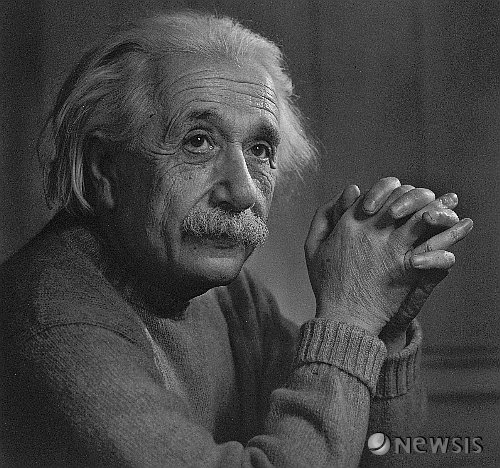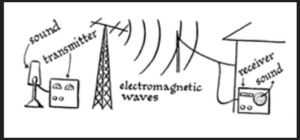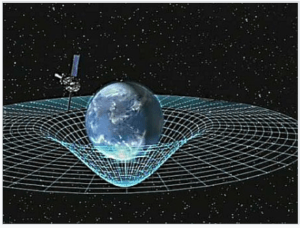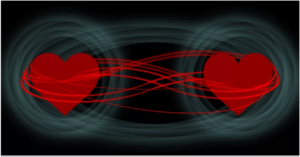Life Is A Simulation Prison! - Death, Parallel Universes, Spacetime & Consciousness | Donald Hoffman
https://en.wikipedia.org/wiki/Donald_D._Hoffman
Donald David Hoffman (born December 29, 1955) is an American cognitive psychologist and popular science author. He is a professor in the Department of Cognitive Sciences at the University of California, Irvine, with joint appointments in the Department of Philosophy, the Department of Logic and Philosophy of Science, and the School of Computer Science.
Hoffman studies consciousness, visual perception, and evolutionary psychology using mathematical models and psychophysical experiments. His research subjects include facial attractiveness, the recognition of shape, the perception of motion and color, the evolution of perception, and the mind–body problem.[1][2] He has co-authored two technical books; Observer Mechanics: A Formal Theory of Perception (1989) offers a theory of consciousness and its relationship to physics; Automotive Lighting and Human Vision (2005) applies vision science to vehicle lighting. His book Visual Intelligence: How We Create What We See (1998) presents the modern science of visual perception to a broad audience. His 2015 TED Talk, "Do we see reality as it is?" argues that our perceptions have evolved to hide reality from us.[3]
2013년 처음 만들어진
Beyond space-time:
Cosmological Polytopes
: geometric shape. flat space time without gravityHeart of amplituhedron
decorated permutation = card shuffling
https://www.edge.org/conversation/donald_d_hoffman-realism-is-false
There's something called scattering amplitudes, the scattering behavior of particles in the Large Hadron Collider. So you smash protons together at near the speed of light. In many cases, you'll have quarks and gluons hit each other and spray out, so you might have two gluons coming in and four gluons spraying out. You see these things in the detectors, and you can talk about the probabilities or what they call the amplitudes for these various scattering events. They've discovered that if you do the computations of the scattering amplitudes in space and time using Feynman diagrams, you get hundreds of pages of math. It's ugly and you can't do it in real time because you're doing a billion of these collisions per second, roughly. They found that they could collapse these expressions to simple expressions, from hundreds of pages down to two or three terms, if they don't do the computation in space and time.
One of the things they deal with is something called the amplituhedron. It's a geometric object outside of space and time, and the volumes of various parts of the amplituhedron correspond to the probabilities of these scattering events. This amplituhedron has symmetries that cannot be expressed in space and time. The physicists are discovering that there's this new realm behind space and time. They don't know what it's about. Right now, they're following the math, which is telling us that there is this structure outside of space and time and it makes the computation simpler, gives us insight into symmetries that you can't see in space and time.
Maybe this dynamic of conscious agents that we're thinking about could be the realm behind space and time. My big project over the next couple of years, with the physicists on my team, is to try to understand how the dynamics of conscious agents might give rise to this amplituhedron.
One of the ideas I'm looking at has to do with the dynamics of conscious agents, the so-called Markovian dynamics. That just means that what you're going to do at this moment depends pretty much on your current state. So, whatever your current state is, it governs all the probabilities of what you're going to do at the next decision point. You have only a finite memory of what you've done in the past, and it's only a finite memory of what you've done in the past that influences your future behavior.
When you look at these kinds of Markovian dynamics, you can look at their long-term behavior. We have a step-by-step behavior of what conscious agents are doing at each step of their interaction. Think of their interactions like a vast social network, like the Twitterverse. There's a bunch of conscious agents, like a bunch of Twitter users, and they're all interacting with each other. But what they're doing is passing experiences back and forth between each other.
We can look at the dynamics of what's happening at each step of this social network in this interaction, or we can look asymptotically. As the number of interactions goes to infinity, what kinds of patterns do you see there? That's where I'm thinking we might get the connection to physics and the amplituhedron, not at the step-by-step dynamics of conscious agents. That's too fine a grain. If we look at the infinite long-term asymptotic behavior of these social networks of conscious agents, that asymptotic behavior erases a lot of the detailed information about the social network and how it works. On the other hand, it's capturing the long-term patterns. That's going to be one of those central proposals. What physics has been doing is capturing just the long-term asymptotic behavior of these networks of conscious agents. That's why it hasn't looked conscious at all.
For example, if you're looking at the freeways in Southern California from an airplane, you just see a bunch of little dots moving around. There's not much evidence of any consciousness or intelligence. You're looking at it from a high level and you're erasing a lot of information. You don't see all the conscious individuals inside the cars. You just see this pattern of flow, of little dots on streets. That's what physics has been seeing. It's not seeing the step-by-step dynamics of the conscious agents. It's only seeing a top-level asymptotic description of the long-term behavior of these social networks of conscious agents. That's why we haven't seen things that look like they're conscious, because we're only seeing the long-term behavior.
Of course, there's a lot of specific mathematical steps that we'll have to take to prove that the asymptotic dynamics of these social networks precisely fits into the structure of the amplituhedron, which they have shown can give rise to the interesting features of quantum theory and relativity theory combined.
https://en.wikipedia.org/wiki/Amplituhedron
Amplituhedron
This scientific article needs additional citations to secondary or tertiary sources. (November 2017) |

In mathematics and theoretical physics (especially twistor string theory), an amplituhedron is a geometric structure introduced in 2013 by Nima Arkani-Hamed and Jaroslav Trnka. It enables simplified calculation of particle interactions in some quantum field theories. In planar N = 4 supersymmetric Yang–Mills theory, also equivalent to the perturbative topological B model string theory in twistor space, an amplituhedron is defined as a mathematical space known as the positive Grassmannian.[1][2]
Amplituhedron theory challenges the notion that spacetime locality and unitarity are necessary components of a model of particle interactions. Instead, they are treated as properties that emerge from an underlying phenomenon.[3][4]
The connection between the amplituhedron and scattering amplitudes is a conjecture that has passed many non-trivial checks, including an understanding of how locality and unitarity arise as consequences of positivity.[1] Research has been led by Nima Arkani-Hamed. Edward Witten described the work as "very unexpected" and said that "it is difficult to guess what will happen or what the lessons will turn out to be".[5]
Description
When subatomic particles interact, different outcomes are possible. The evolution of the various possibilities is called a "tree", and the probability amplitude of a given outcome is called its scattering amplitude. According to the principle of unitarity, the sum of the probabilities (the squared moduli of the probability amplitudes) for every possible outcome is 1.
The on-shell scattering process "tree" may be described by a positive Grassmannian, a structure in algebraic geometry analogous to a convex polytope, that generalizes the idea of a simplex in projective space.[3] A polytope is the n-dimensional analogue of a 3-dimensional polyhedron, the values being calculated in this case are scattering amplitudes, and so the object is called an amplituhedron.[1]
Using twistor theory, Britto–Cachazo–Feng–Witten recursion (BCFW recursion) relations involved in the scattering process may be represented as a small number of twistor diagrams. These diagrams effectively provide the recipe for constructing the positive Grassmannian, i.e. the amplituhedron, which may be captured in a single equation.[3] The scattering amplitude can thus be thought of as the volume of a certain polytope, the positive Grassmannian, in momentum twistor space.[1]
When the volume of the amplituhedron is calculated in the planar limit of N = 4 D = 4 supersymmetric Yang–Mills theory, it describes the scattering amplitudes of particles described by this theory.[1]
The twistor-based representation provides a recipe for constructing specific cells in the Grassmannian which assemble to form a positive Grassmannian, i.e., the representation describes a specific cell decomposition of the positive Grassmannian.
The recursion relations can be resolved in many different ways, each giving rise to a different representation, with the final amplitude expressed as a sum of on-shell processes in different ways as well. Therefore, any given on-shell representation of scattering amplitudes is not unique, but all such representations of a given interaction yield the same amplituhedron.[1]
The twistor approach is relatively abstract. While amplituhedron theory provides an underlying geometric model, the geometrical space is not physical spacetime and is also best understood as abstract.[6]
Implications
The twistor approach simplifies calculations of particle interactions. In a conventional perturbative approach to quantum field theory, such interactions may require the calculation of thousands of Feynman diagrams, most describing off-shell "virtual" particles which have no directly observable existence. In contrast, twistor theory provides an approach in which scattering amplitudes can be computed in a way that yields much simpler expressions.[7] Amplituhedron theory calculates scattering amplitudes without referring to such virtual particles. This undermines the case for even a transient, unobservable existence for such virtual particles.[6]
The geometric nature of the theory suggests in turn that the nature of the universe, in both classical relativistic spacetime and quantum mechanics, may be described with geometry.[6]
Calculations can be done without assuming the quantum mechanical properties of locality and unitarity. In amplituhedron theory, locality and unitarity arise as a direct consequence of positivity.[4] They are encoded in the positive geometry of the amplituhedron, via the singularity structure of the integrand for scattering amplitudes.[1] Arkani-Hamed suggests this is why amplituhedron theory simplifies scattering-amplitude calculations: in the Feynman-diagrams approach, locality is manifest, whereas in the amplituhedron approach, it is implicit.[8]
//
2022 nobel prize for physics went to soneone who did discovery in prediction of quantum entanglement - real world isn't rea
Local/realism is false
-- Local: time and space is a fundamental thing
-- Realism: 내가 관찰하든 안하든 이 세상은 객관적으로 존재
두 양자가 얽혀 있다면, 하나의 양자 상태가 변화하면 다른 양자 상태도 즉시 그에 반응하여 관련성을 보인다. 이 현상은 두 양자 사이의 정보 전달 없이 일어나기 때문에, 정보가 빛의 속도를 초과하여 전달되었다고 해석하면 안 된다.
2022 노벨물리학상 수상자 존 클라우저…'양자 얽힘의 실재' 강연
클라우저, 아인슈타인 'EPR 이론' 반박한 '벨 부등식' 실험으로 입증

인류 역사상 최고의 천재 중 한 명으로 칭송받는 아인슈타인은 죽는 날까지 이같은 이유를 들며 ‘양자 얽힘’ 현상을 받아들이지 못했다. 하지만 아인슈타인이 사망한 지 70여년이 지난 현재, 적어도 양자역학과 관련해서는 아인슈타인이 틀린 것으로 보인다. 양자 얽힘 현상이 이론적, 실험적으로 모두 입증되며 양자 컴퓨터와 양자 통신의 실현 가능성까지 제기됐기 때문이다.
양자 얽힘 현상이 실재함을 입증하며 노벨물리학상을 손에 거머쥔 존 F 클라우저 박사는 26일 서울 DDP에서 열린 ‘퀀텀 코리아 2023’에서 노벨상을 선사한 자신의 연구 결과에 대한 기조 연설을 진행했다. 연설 주제는 ‘비국소적 양자 얽힘은 실재한다 - 실험적 증거’다.
◆보어 “수십억 광년 떨어진 양자도 ‘얽힘’ 상태에 있어” vs 아인슈타인 “빛보다 빠른 정보전달은 불가”
클라우저에 따르면 양자 얽힘에 대한 학계의 관심과 논쟁은 20세기 초 아인슈타인과 닐스 보어의 해석 차이를 두고 불이 붙었다.
양자역학은 ‘중첩’과 ‘얽힘’을 빼놓고 이야기할 수 없다. 에컨대 두 양자입자가 각각 A와 B라는 특징(A와 B를 모두 지니는 건 불가)을 갖고 있을 경우 두 입자의 특징은 관측을 통해 상태를 확인돼야만 결정된다. 관측되기 전까지는 두 입자에 A와 B라는 특징이 ‘중첩’된 상태라는 것이다.
이후 한 입자가 A라는 특징을 지닌다는 것이 관측을 통해 확인되면 나머지 입자는 자동으로 B 특징을 갖게 된다. 이렇게 한 입자의 특징이 결정됐을 때 나머지 하나의 특징이 자연스럽게 결정되는 것은 이 두 특징이 ‘얽힘’ 상태에 있기 때문이다.
이에 대해 보어는 양자입자는 두 특징 중 하나의 상태만 존재해야 하기 때문에 양자입자가 관측될 때 비로소 중첩된 상태가 무너지며 상태가 결정된다는 양자역학의 개념을 만들어냈다. 특히 양자 입자들이 얽힘 상태에 있다면 두 입자가 수십억 광년이 떨어져있다 하더라도 중첩 붕괴는 동일하게 나타나게 된다는 해석이다.
하지만 아인슈타인이 이에 대해 문제를 제기했다. 한 입자에서 A라는 특징이 결정되면 나머지 입자에 정보가 전달돼야 B라는 특징이 정해질 수 있는데, 보어의 해석에 따르면 정보 전달이 빛보다 빠르게 일어난다는 지적이다. 상대성 이론에 따르면 어떤 정보 전달도 빛보다 빠를 수 없기에 보어가 주장한 즉각적인 중첩 붕괴는 이뤄질 수 없다는 것이다. ‘슈뢰딩거의 고양이’ 실험을 통해 양자역학의 불완전을 증명하고자 한 에르빈 슈뢰딩거 또한 이같은 얽힘 현상을 보고 혼란스러워 한 것으로 알려졌다.
이같은 주장은 이른바 ‘EPR 역설(아인슈타인-포돌스키-로젠 역설)’을 만들어냈는데, 이 역설을 해소하기 위해 나온 것이 ‘국소적 숨은 변수 이론(EPR 이론)’이다. 멀리 떨어진 두 입자를 각각 측정하는 것은 2개의 독립 사건이기에 국소성이 있다고 가정하고, 한 입자가 나머지 입자의 상태에 영향을 주는 것은 관측자가 알 수 없는 ‘숨은 변수’가 있다는 이론이다.
◆아인슈타인의 역설에 사망 선고 내린 벨과 클라우저…‘양자 얽힘’ 실재 실험으로 입증
지난해 노벨물리학상은 이같은 EPR 이론에 완전한 사망 선고를 낸 이들에게 돌아갔다. 기존에도 학계에서는 EPR 이론이 잘못됐고 보어의 해석이 맞다는 주장이 지배적이었으나 이를 실험적으로 입증하지 못했었다. 하지만 클라우저와 알랑 아스페, 안톤 자일링거 등 3명의 학자가 이를 실제로 입증해 낸 것이다.
EPR 이론의 허점을 처음으로 지적한 것은 영국의 물리학자 존 스튜어트 벨이다. 벨은 1964년 양자역학계에서 가장 중요한 수식 중 하나인 ‘벨 부등식’을 선보였다. EPR 이론이 맞다면 모든 통계적 예측이 벨 부등식에 부합해야 하고, 만약 단 하나라도 성립하지 못해 벨 부등식의 한계가 입증된다면 양자 얽힘이 존재한다는 보어의 해석이 맞다는 것이었다.
벨 부등식은 이론적으로는 가능하다는 평가를 받았으나 이를 실제로 인정받기 위해 필수적인 실험실에서의 구현을 이루지 못했다. 이같은 단점을 보완해 실험실에서 벨 부등식의 한계를 증명해내는 데 성공했다.
클라우저는 칼슘 원자의 광자 얽힘 상태가 존재함을 자체 설계한 광원(빛)을 통해 실험으로 증명해 냈다. 클라우저는 3명의 동료 물리학자들과 함께 벨 부등식을 다시 쓴 ‘CHSH 부등식’을 선보이며 현대 양자역학에 기념비를 세웠다.
이처럼 양자 얽힘의 실재가 입증되면서 우리가 살고 있는 세계에는 한 공간에서 일어나는 모든 현상은 이와 분리된 다른 공간에서 발생해 영향을 미칠 수 있다는 ‘비국소성’이 적용되고 있다는 양자역학의 이론이 힘을 얻게 됐다.
클라우저의 실험 이후에는 아스페가 클라우저의 실험에서 부족했던 점을 보완해 칼슘 원자가 ‘들뜬 상태’에서 ‘바닥 상태’로 떨어질 때도 얽힌 광자를 방출한다는 것을 발견했고, 자일링거가 양자 얽힘 현상을 실제 활용한 실험을 진행해 양자 상태를 한 입자에서 다른 입자로 멀리 이동시키는 ‘양자 순간이동’이라는 현상을 시연해내며 함께 노벨상 수상의 영예를 안게 됐다.
학계에서는 이들이 양자 얽힘 현상이 실재함을 실험을 통해 입증해내면서 양자역학의 완전성이 증명됐고, 그 덕에 양자컴퓨터, 양자통신 등 현대기술의 단초를 쌓을 수 있다고 보고 있다.
클라우저는 이날 행사 강연에서 양자 얽힘 현상의 증명을 두고 “80년 넘게 누구도 우리 방안에 있는 코끼리(누구나 알면서도 누구도 말하지 않는 문제)에 대해 아무런 얘기를 하지 않았던 것”이라며 “지금까지의 노력을 통해 양자역학에서 양자 얽힘을 설명할 수 없는 국소성 실체성은 죽었다는게 밝혀졌다”고 강조했다.
한편 클라우저는 이날 강연에 앞서 행사 축사를 통해 국내외 젊은 과학자들이 가져야 할 자세에 대해 조언하기도 했다. 그는 “과학자의 역할은 무엇이 진실인지를 검증하는 것”이라며 “지금 우리가 살고 있는 세계는 잘못된 정보를 퍼뜨리는 나쁜 과학으로 가득 차있다. 자연에 대한 신중한 관찰과 실험을 통해 잘못된 과학과 정보가 전파되는 것을 막아야 한다”고 강조했다.
https://quantumphysicslady.org/glossary/local-realism/
local realism
[This article is under construction.]
Local realism is a quick way of saying two principles: 1) Principle of locality: the cause of a physical change must be local. That is, a thing is changed only if it is touched, and 2) Principle of realism: Properties of objects are real and exist in our physical universe independent of our minds. In other words, we live in an objective reality, not one which exists only in our minds or which takes form only upon our looking at it. These two principles are described more fully below.
While classical physics operates in accordance with the principles of local realism, quantum mechanics appears not to. Experimental evidence increasingly indicates that we do not live in a universe characterized by local realism.
Locality
In everyday life, we assume the principle of locality. We assume that for an object or energy to cause an effect on another, the two must touch. In physicist’s terms, “touching” means “interacting.” We assume that a force causes an effect solely by traveling through spacetime and, then, interacting with it. Most of us don’t think that, in the physical universe, a fairy godmother can wave a magic wand in the air and transform a pumpkin standing ten feet away into a magnificent golden coach. Instead, it is necessary


According to Einstein’s Theory of Special Relativity, electromagnetic waves travel through the vacuum of space at the speed of light. This is about 186,000 miles per second. In other media, electromagnetic waves may travel slower than the speed of light, but never faster. Never, for example, instantaneously.

Sometimes, people shorten up the principle of locality by saying that it means that no energy or matter can cross a distance to another energy or matter and affect it at a speed faster than the speed of light. This is also sometimes called “relativistic locality.”
Action-at-a-Distance Discarded (Other Than in Quantum Physics)

Newton wrote in a letter in 1692/93 **: “That Gravity should be innate, inherent and essential to Matter, so that one body may act upon another at a distance thro’ a Vacuum, without the Mediation of any thing else, by and through which their Action and Force may be conveyed from one to another, is to me so great an Absurdity that I believe no Man who has in philosophical Matters a competent Faculty of thinking can ever fall into it.”
But Newton’s mathematical laws seemed to support this “Absurdity.” And the theory is close enough to empirical experience that it has very practical uses in engineering. So, the mass-attracts-mass theory stuck. It is this Newtonian understanding of gravity that is relied on for most modern engineering projects, including the moon shots of the 20th Century.
However, many decades ago, among physicists, Einstein’s Theory of General Relativity replaced Newton’s action-at-a-distance explanation of gravity. General Relativity was accepted by theoretical physicists soon after Einstein proposed it in 1915. This is not due to Einstein’s reputation but because his theory predicts empirical results more accurately than does Newton’s action-at-a-distance. For example, the equations of General Relativity describe the orbit of Mercury around the sun accurately, whereas Newton’s gravitational equations to not.
However, the mathematical difference between calculations using Newton’s action-at-a-distance theory of gravity and using General Relativity diverge significantly only in very limited situations. These include, for example, when dealing with extremely large masses such as the masses of the planet Mercury and the sun. Nevertheless, according to physicists, objects do not exert an instantaneous gravitic force on each other through empty space. There must be touching—that is, interaction. In the case of General Relativity, objects with mass touch spacetime, itself.
In quantum mechanics, locality is problematic.
Describing quantum mechanics is complicated by there being so many interpretations of it. The description which follows sees quantum mechanics through the eyes of the Transactional Interpretation.****
While macroscopic objects like tables and chairs are subject to the principle of locality, quantum physics raises severe issues regarding locality. The experimental evidence for quantum entanglement requires that we reject the assumptions of, at least one of the following:
- Locality,
- Realism,
- Free will on the part of the experimenter,
- Or a combination of these.

When, in the 1930’s, this violation became apparent in the mathematics of quantum mechanics, Albert Einstein concluded that quantum mechanics must be incomplete. As he saw it, a principle that would reconcile quantum mechanics with Special Relativity was missing. In 1935, he, along with colleagues, published the famous EPR paper, outlining the “paradox” of the non-locality of quantum mechanics. This paper is among the most cited physics journal articles of all time.
However, experiments conducted by physicist, John Clauser, and later by Alain Aspect and other physicists, have shown that the coordination between entangled particles is real. It occurs faster than light and, possibly, instantaneously. Mathematically, entangled particles are described as parts of the same equation, not as if they are two different particles interacting. And this is how they seem to behave in experiments, regardless of their distance from each other. They seem to act as though they are part of a single system, one described by a single equation. For more information, see the article on entanglement.
However, there are possible loopholes regarding locality as described below. For a time, physicists thought quantum physics might squeeze through one of these loopholes: a lack of realism or the experimenter’s lack of freedom to choose his/her experiment. The issue of realism is addressed below as is, briefly, the issue of Free Will.
Quantum mechanics may violate realism.
The physics of macroscopic objects, such as tables and chairs, assumes an objective reality exists external to us. This is the principle of realism. As Einstein put it, “I like to think that the moon is there even if I’m not looking at it.” Objects which accord with the principle of realism have defined properties independent of our measurements. A macroscopic object, for example, a chair sitting in Carnegie Hall, has an exact position. We can confirm that position by measuring its distance from the walls and the floor. But we assume that before we measured it, its position was definite and completely defined. The chair’s position is not a range of numbers, each having a certain probability of actualizing at the moment of measurement. No—leave that kind of behavior to atomic and subatomic particles.
The position of an atomic or subatomic particle is a cloud of possibilities until the particle interacts with an aspect of the physical universe. For example, it might hit the screen of a particle detector. Hitting the screen, an interaction with a part of the physical universe, is what physicists mean by “observation, also called “measurement.” Some physicists and philosophers have held that measurement or observation must involve human consciousness,*** but at this time, this is not a widely-held view.
Upon measurement, the particle instantaneously adopts a particular position. Physicists can use the math of quantum mechanics to predict the likelihood of any particular position but they cannot predict a definite position. Nor did a definite position even exist prior to measurement. In other words, atomic and subatomic particles do not behave in accordance with the principle of realism. Experiments such as the Double Slit Experiment provide empirical evidence of the lack of realism of atomic and subatomic particles. For more on this topic, see the definition of measurement.
Local Realism
In everyday life, most of us assume:
- Locality: Causes must travel through spacetime at the speed of light or slower to affect other energies or objects, and
- Realism: The universe exists external to our minds and exists whether or not we observe or measure it.
That is, we assume local realism. We, like Einstein, would like to think that the moon exists whether or not we’re looking at it. And we like to think that a photon cannot instantaneously coordinate its behavior with that of another photon that is across universe from it. However, quantum mechanics experiments do not support the assumption of local realism.
Experimental Evidence in Quantum Mechanics Regarding Local Realism
When Albert Einstein wrote the EPR paper, the debate about local realism was philosophical. It was not possible to test for local realism experimentally. However, in 1964, an Irish physicist at CERN, John Bell, published a paper showing that such an experimental test is possible. He proposed what is now called “Bell’s Theorem.” This is a mathematical theorem that the results of quantum entanglement experiments will vary depending on whether or not local realism holds. In other words, if local realism is true, quantum entanglement experiments will yield one specified set of results. If local realism is not true, the same experiments will yield a different specified set of results.
In 1972, John Clauser, a physicist at the University of California at Berkeley along with colleagues, ran experiments on Bell’s Theorem. These experiments were done on entangled photons. Clauser found, as did later experimenters, notably French physicist, Alain Aspect, and Viennese physicist, Anton Zelinger, that local realism does not hold for entangled photons. That is, either locality, realism, or both are false assumptions. Clauser, Aspect, and Zeilinger won the 2010 Wolf Prize in physics for this work.
Bell’s Theorem and Free Will
However, there is a loophole through which Nature could preserve local realism. Local realism could still be a true assumption if physicists are not free to choose their experiments, that is, if they don’t have Free Will. Let’s say that the universe is governed by Superdeterminism. Under the assumption of superdeterminism, scientists and everyone else and everything else are no more than puppets whose every move move is determined. In this situation, they might think that they are deciding to set a light polarizer to measure vertical polarization rather than horizontal polarization. However, they are deceived by Nature, who has actually determined in advance that the vertical setting should be selected. And, importantly, Nature also determines the results of the experiment. Possibly, the laws of Nature work such that local realism is true but other laws of Nature obscure this when doing certain types of experiments. If Nature is pulling all the strings, scientists would have no hope of learning the truth—all their actions when conducting experiments are being choreographed. This is superdeterminism. Superdeterminism would defeat the scientific enterprise. We could never know if we are moving closer to the truth or only going through pre-programmed motions with pre-programmed outcomes.
John Bell described the Superdeterminism loophole this way:
“There is a way to escape the inference of superluminal speeds and spooky action at a distance. But it involves absolute determinism in the universe, the complete absence of free will. Suppose the world is super-deterministic, with not just inanimate nature running on behind-the-scenes clockwork, but with our behavior, including our belief that we are free to choose to do one experiment rather than another, absolutely predetermined, including the “decision” by the experimenter to carry out one set of measurements rather than another, the difficulty disappears. There is no need for a faster than light signal to tell particle A what measurement has been carried out on particle B, because the universe, including particle A, already “knows” what that measurement, and its outcome, will be.” *****
Were superdeterminism to hold, no experiment could tell us if our universe is characterized by local realism or not. Superdeterminism may seem like an extreme assumption to propose, but throwing out local realism is also an extreme step.
Footnotes
* Isaac Newton, Letters to Bentley, 1692/93 as quoted in the Wikipedia.org article on action at a distance.
*This understanding of electromagnetism as a wave traveling through a field was first developed by Michael Faraday in the mid-1800’s.
** Known loopholes for the violation of local realism in quantum mechanics entanglement were ruled out by an experiment performed in 2015 at the Colorado National Institute of Standards and Technology in coordination with the Jet Propulsion Laboratory, https://www.nist.gov/news-events/news/2015/11/nist-team-proves-spooky-action-distance-really-real. The experiment found that entangled pairs of photons correlated their polarization and were able to rule out the “freedom of choice” loophole, hidden variables, and signaling between the two particles at light speed or slower. Later experiments have confirmed these results.
***One of the founding fathers of quantum mechanics, Eugene Wigner, held the view that human consciousness was required for a measurement to occur. But he later rejected it. Interpretations such as Information Theory and the Transactional Interpretation explain quantum mechanical phenomena without invoking human consciousness. But quantum mechanical phenomena draw many towards the view that we live in a simulation and that consciousness is required for the appreciation of the simulation.
**** Ruth E. Kastner, Understanding Our Unseen Reality, Solving Quantum Riddles, Imperial College Press, London, 2015.
*****Interview with John Bell by Paul Davies, BBC Radio, 1985 as quoted at https://en.wikipedia.org/wiki/Superdeterminism#cite_note-2.
한마디로 요약:
Things only exist when you look at them.
//
첨단 진화론의 발견 (Evolutionary Game Theory)
randomly chosen "fitness pay offs" --> the percentage to predict the structure of the world
probability is 0
https://en.wikipedia.org/wiki/Evolutionary_game_theory
Evolutionary game theory (EGT) is the application of game theory to evolving populations in biology. It defines a framework of contests, strategies, and analytics into which Darwinian competition can be modelled. It originated in 1973 with John Maynard Smith and George R. Price's formalisation of contests, analysed as strategies, and the mathematical criteria that can be used to predict the results of competing strategies.[1]
Evolutionary game theory differs from classical game theory in focusing more on the dynamics of strategy change.[2] This is influenced by the frequency of the competing strategies in the population.[3]
Evolutionary game theory has helped to explain the basis of altruistic behaviours in Darwinian evolution. It has in turn become of interest to economists,[4] sociologists, anthropologists, and philosophers.
자외선
-> 인간원리 지지?
//
ChatGPT - statistical
Not deeply intelligent
//
There's no firm distinction between macro and micro
양자역학이 어느 범위까지 적용되는지 알려진 바가 없다.
//
Headset의 비유
joy of exploration beyond space-time
dots, pixels, video screen
0.0035% known world
인간이 인식할 수 있는 세계
Fourth dimension: object
amplitude hedrin, 루빅스 큐브, 칸도어의 무한우주,
Dark energy, dark matter?
자외선
새우는 10종류의 시신경세포
If space-time is not fundamental, then the "consciousness" is not a late comer
//
또다른 인간원리 사례
수학을 통해 블랙홀 존재 예견한 아인슈타인
올해 노벨 물리학상 3명 발표
천체 물리학자 펜로즈, 스티븐 호킹과 함께 수학적으로 ‘이론 정립’
역대 네 번째 여성 수상자인 게즈는 겐첼과 망원경 통해 ‘실제 확인’

2020년 노벨 물리학상 수상자인 영국의 로저 펜로즈, 미국의 앤드리아 게즈, 독일의 라인하르트 겐첼(왼쪽 사진부터). EPA·연합뉴스
올해 노벨 물리학상은 ‘블랙홀’의 존재를 증명한 세 명의 과학자들에게 돌아갔다.
스웨덴 노벨위원회는 6일(현지시간) 영국의 로저 펜로즈(89)와 독일의 라인하르트 겐첼(68), 미국의 앤드리아 게즈(55)를 노벨 물리학상 수상자로 선정했다고 발표했다.
게즈는
1903년 마리 퀴리, 1963년 괴퍼트 마이어, 2018년 도나 스트리클런드에 이어 역대 4번째 여성 노벨 물리학상 수상자로
이름을 올리게 됐다. 게즈는 수상 소감으로 “젊은 여성들이 과학계로 오는 계기가 되길 희망한다”며 “이곳은 즐거움이 매우 많을
뿐만 아니라 과학에 대한 열정이 있다면 할 수 있는 일이 너무 많다”고 말했다.
블랙홀의 존재 가능성을 처음 제기한 학자는 앨버트 아인슈타인이다. 하지만 엄청난 중력으로 주변의 모든 별은 물론 빛까지 삼키는 성질 때문에 아인슈타인조차도 블랙홀은 이론적으로만 존재하고 실재하지 않을 것으로 생각했다.
펜로즈는
2018년 사망한 스티븐 호킹과 함께 블랙홀에 대한 이론을 수학적으로 정립한 업적을 인정받았다. 펜로즈가 1965년 1월에
발표한 연구 결과는 아인슈타인 사후 일반상대성이론을 발전시킨 가장 중요한 사례가 되었으며, 블랙홀이 우주에 있을 수 있다는 사실을
증명했다고 노벨위원회는 설명했다.
겐첼과 게즈는 개념적으로 존재했던
블랙홀을 망원경을 통해 실제로 확인했다. 이들은 1990년대 초부터 우리 은하 중심부에 있는 궁수자리A별을 집중 관찰해 블랙홀로
확실시되는 천체를 찾아냈다. 블랙홀은 빛을 뿜지 않아 별처럼 빛나는 모습을 관측할 수는 없지만 해당 천체가 가진 중력이 부피에
비해 매우 컸던 것이다. 연구 결과는 2009년 국제학술지 ‘천체물리학 저널’에 실렸고 이른바 ‘초대질량 블랙홀’이 실제
존재한다는 결론으로 이어졌다.
이들이 발견한 블랙홀은 태양 질량의 400만배에 이른다. 노벨위원회는 “이들의 연구는 블랙홀 주변의 극한 조건에서 중력 이론이 어떻게 작동하는지에 대한 성찰을 제공했다”고 설명했다.
손봉원
한국천문연구원 책임연구원은 “우주에선 성간물질이 관측을 방해하기 때문에 가시광선이 아닌 적외선으로 관측해야 한다”며 “유럽
과학계는 칠레에 있는 대형 천문대를 활용해 우리 은하 중심에 있는 매우 큰 블랙홀의 질량을 알아냈다”고 말했다.
블랙홀과 연관된 연구자들은 2017년에도 노벨 물리학상 수상의 영예를 안은 바 있다. 킵 손 캘리포니아공대 명예교수 등 3명이 ‘중력파’에 관한 연구로 수상자가 됐다.
//
레이먼드 문디의 NDE
//
피아제 Object Permannce
3 month부터 개념 정립
이 때부터 뇌에 wire되는 것
그러나 과학적 연구를 통해 이 wire된 것에서 벗어나서 생각해볼 수 있다.
"I really like reason, because it shows limits of logic."
//
괴델의 불완전성 정리
뭘 연구하든 통일장 이론은 불가능.
하나의 이론을 연구해서 알아내면, 또 다른 이론을 연구해서 알아내야 하고...이 과정은 끝이 없다.
칸토어의 무한우주
infinite subset
-> never-ending exploration
space-time not fundamental
앨런 튜링
Computable functions vs. non-computable
Most functions are hidden in non-computable (칸토어의 무한대)
//
"수학적으로 정의가능하지만, 계산은 불가능한", 수학의 한계를 드러내는 컴퓨터공학의 Halting Problem
https://en.wikipedia.org/wiki/Halting_problem
In computability theory, the halting problem is the problem of determining, from a description of an arbitrary computer program and an input, whether the program will finish running, or continue to run forever. The halting problem is undecidable, meaning that no general algorithm exists that solves the halting problem for all possible program–input pairs. The problem comes up often in discussions of computability since it demonstrates that some functions are mathematically definable but not computable.
A key part of the formal statement of the problem is a mathematical definition of a computer and program, usually via a Turing machine. The proof then shows, for any program f that might determine whether programs halt, that a "pathological" program g exists for which f makes an incorrect determination. Specifically, g is the program that, when called with some input, passes its own source and its input to f and does the opposite of what f predicts g will do. The behavior of f on g shows undecidability as it means no program f will solve the halting problem in every possible case.
Comments
Post a Comment